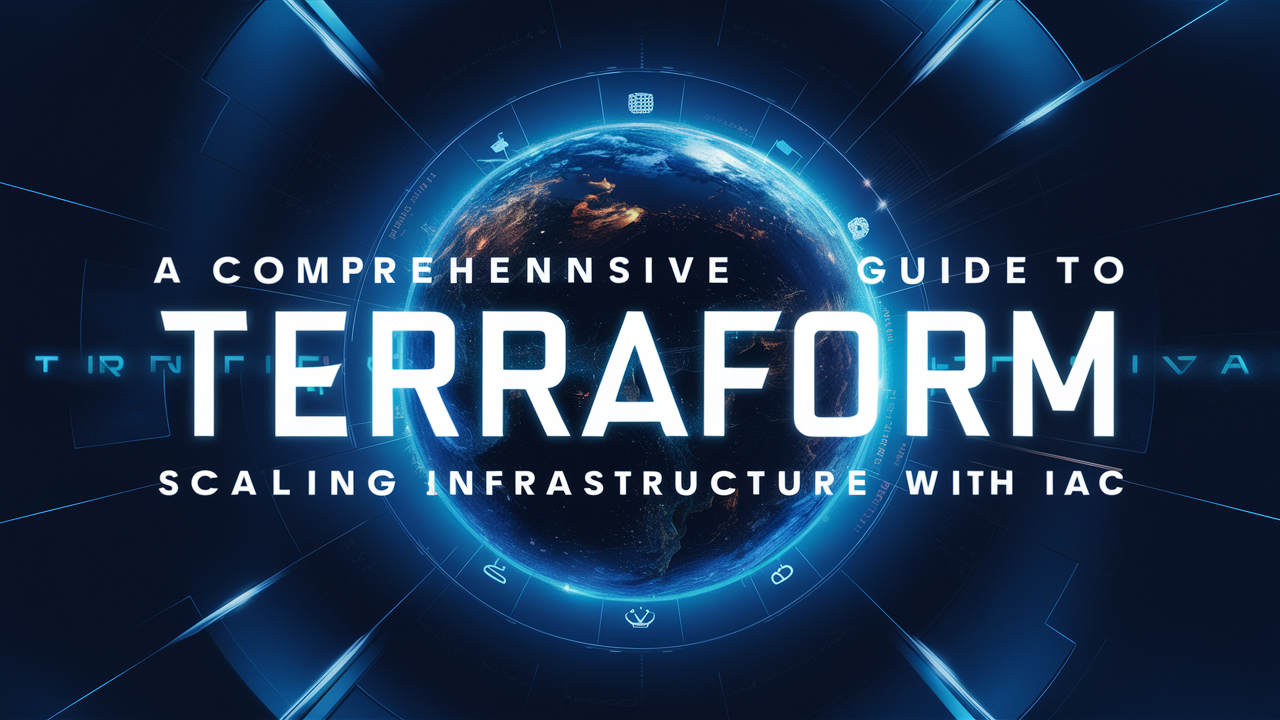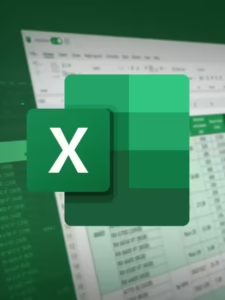In today’s cloud-driven world, managing infrastructure manually is inefficient, error-prone, and not scalable. Enter Terraform Infrastructure as Code (IaC), a methodology that enables developers to automate infrastructure provisioning, management, and scaling using machine-readable configuration files. Among the many tools in the IaC landscape, Terraform stands out for its flexibility, ease of use, and multi-cloud capabilities.
Terraform, developed by HashiCorp, allows teams to define infrastructure in a high-level configuration language and efficiently manage cloud and on-premise infrastructure. This guide will provide an in-depth technical explanation of how Terraform creates infrastructure at scale, exploring its core functionalities, lifecycle, benefits, and best practices.
What is Terraform?
Terraform is an open-source Terraform Infrastructure as Code tool that allows users to define and provision Terraform infrastructure as Code using a high-level configuration language known as HashiCorp Configuration Language (HCL) or JSON. Terraform is widely adopted because of its ability to work with multiple cloud providers (e.g., AWS, GCP, Azure) and hundreds of other services through its provider system.
With Terraform, infrastructure resources such as virtual machines, storage, networks, and even complex systems like Kubernetes clusters can be managed, versioned, and controlled through code.
Benefits of Terraform Infrastructure as Code
Before diving into the technical aspects of how Terraform works, it’s essential to understand the key benefits of using Terraform Infrastructure as Code:
Infrastructure Automation
Terraform automates the provisioning and management of infrastructure. Once the configuration files are written, Terraform handles the rest, including creating, updating, and deleting resources across various cloud platforms and services.
Multi-Cloud and Provider Agnostic
One of Terraform’s greatest strengths is its provider-agnostic architecture. Terraform supports over 1,000 providers, including major cloud providers like AWS, GCP, and Azure, as well as many other infrastructure platforms like Kubernetes, OpenStack, and VMware. This allows organizations to manage Terraform infrastructure as code across different environments using a single tool.
Declarative Configuration
In Terraform, you declare the desired state of your infrastructure in a declarative syntax. Rather than writing out commands for each resource (imperative), you specify the end state, and Terraform determines the actions needed to achieve that state.
Version Control for Infrastructure
Terraform configurations are stored as code, allowing infrastructure to be version-controlled in the same way as application code. By using Git, teams can track changes, revert to previous versions, and collaborate effectively on infrastructure development.
Infrastructure as Code (IaC)
IaC allows developers to treat infrastructure like application code, with testing, validation, and repeatability. By codifying infrastructure, Terraform enables organizations to provision environments consistently and avoid manual misconfigurations.
Terraform's Architecture and Core Concepts
Terraform’s architecture revolves around several key components and concepts. Let’s break them down:
Providers
Providers are the bridge between Terraform and external APIs. Each provider is responsible for managing a specific set of resources. For example, the AWS provider allows Terraform to interact with AWS services like EC2, S3, and RDS.
Terraform uses a plugin-based architecture for providers, and you specify which providers to use in your configuration file.
Example:
provider "aws" { region = "us-west-2" } provider "google" { credentials = file("path/to/credentials.json") project = "my-gcp-project" }
Resources
Resources are the fundamental building blocks of Terraform. Each resource represents a specific piece of infrastructure, such as a virtual machine, database, or storage bucket.
Example resource definition for an AWS EC2 instance:
resource "aws_instance" "my_instance" { ami = "ami-0c55b159cbfafe1f0" instance_type = "t2.micro" tags = { Name = "MyInstance" } }
Modules
Modules are containers for multiple resources that are used together. They are reusable code blocks that help in organizing and managing resources. A module might consist of several resource definitions, such as VPC, subnets, and EC2 instances.
Example of a module call:
module "vpc" { source = "terraform-aws-modules/vpc/aws" version = "3.0.0" name = "my-vpc" cidr = "10.0.0.0/16" enable_dns_support = true }
State
Terraform keeps track of the real-world state of your infrastructure using a state file, typically named terraform.tfstate. This file is crucial for comparing the current infrastructure with the desired state specified in your configuration files.
State management is critical when working in a team, and Terraform allows for remote state management via S3, Azure Blob Storage, and other backends.
Terraform Lifecycle: Writing, Planning, Applying, and Infrastructure Readiness
Terraform follows a well-defined lifecycle to provision and manage infrastructure. The image above outlines this process in four stages: Write, Plan, Apply, and Infra Ready. Let’s explore each of these stages in detail.
Write: Defining Infrastructure with Code
In the first stage, you write Terraform configurations using HCL. These configurations define the desired state of the infrastructure. The code can contain resources, data sources, providers, and outputs.
Example Configuration:
provider "aws" { region = "us-west-2" } resource "aws_instance" "web" { ami = "ami-0c55b159cbfafe1f0" instance_type = "t2.micro" tags = { Name = "WebServer" } }
In this example, an EC2 instance is defined with a specific Amazon Machine Image (AMI) and instance type. The resource is tagged as “WebServer.”
Plan: Previewing the Infrastructure Changes
The Terraform plan command provides a preview of the changes Terraform will make to the Terraform infrastructure as Code. It compares the desired state (as defined in the configuration files) with the current state stored in the state file.
This step allows you to check for any mistakes or unintended consequences before making actual changes. The command output shows which resources will be created, modified, or destroyed.
$ terraform plan
Apply: Provisioning the Infrastructure
Once the plan is reviewed and confirmed, the terraform apply command is used to apply the changes and create or modify the Terraform infrastructure as Code.
$ terraform apply
Terraform infrastructure as Code uses the configuration file and makes API calls to the relevant cloud providers (AWS, Azure, Google Cloud, etc.) to provision the resources. It also updates the state file to reflect the new state of the Terraform infrastructure as Code.
Infra Ready: Infrastructure Provisioned
Once the apply command finishes executing, the infrastructure is provisioned and ready to use. Whether you’ve created EC2 instances, S3 buckets, VPCs, or Kubernetes clusters, Terraform ensures that your infrastructure matches the desired state.
Practical Examples and Skeleton Code for Terraform Configurations
Here are a few practical examples of how Terraform infrastructure as Code can be used to provision resources in different cloud environments.
AWS EC2 Instance with Security Group
provider "aws" { region = "us-west-2" } resource "aws_security_group"
"web_sg" { name = "web-sg" description = "Allow web traffic" ingress {
from_port = 80 to_port = 80 protocol = "tcp" cidr_blocks = ["0.0.0.0/0"] }
egress { from_port = 0 to_port = 0 protocol = "-1" cidr_blocks =
["0.0.0.0/0"] } } resource "aws_instance" "web" { ami = "ami-
0c55b159cbfafe1f0" instance_type = "t2.micro" vpc_security_group_ids =
[aws_security_group.web_sg.id] tags = { Name = "WebServer" } }
Google Cloud GKE Cluster
provider "google" { project = "my-gcp-project" region = "us-central1" }
resource "google_container_cluster" "primary" { name = "gke-cluster"
location = "us-central1" initial_node_count = 1 node_config { machine_type =
"e2-medium" preemptible = true } }
These examples show how easily Terraform infrastructure as Code can be used to provision resources across different cloud platforms using a consistent configuration language.
Advanced Terraform Features: Modules, Workspaces, and State Management
Terraform Modules
Modules in Terraform allow you to create reusable blocks of code. A module can be a simple configuration file or a complex set of resources that manage a specific infrastructure component like a VPC or a database cluster.
Using modules promotes code reusability, and it’s a good practice to organize your Terraform configurations into modules, especially when working on large-scale infrastructure.
Example of a module usage:
module "network" { source = "./modules/network" vpc_cidr = "10.0.0.0/16"
subnet_cidrs = ["10.0.1.0/24", "10.0.2.0/24"] }
Workspaces
Terraform workspaces allow you to manage multiple environments (e.g., development, staging, production) from a single configuration. Each workspace has its state file, allowing you to keep the infrastructure separate for different environments.
$ terraform workspace new dev $ terraform workspace select prod
State Management and Remote Backends
Managing Terraform state is crucial in team environments. Terraform provides options to store state files remotely using backends like Amazon S3, Azure Blob Storage, and Google Cloud Storage. The remote state helps in sharing the state file across multiple users and ensures consistency.
Example for using an S3 backend:
terraform { backend "s3" { bucket = "my-terraform-state" key =
"prod/terraform.tfstate" region = "us-west-2" } }
Best Practices for Terraform in Production
Use Remote State Management
Always use remote state storage for production environments to ensure that your state file is securely stored and easily accessible to team members. Use state locking to avoid conflicts during simultaneous changes.
Version Control Everything
All Terraform configurations should be stored in a version control system like Git. This allows for tracking changes, code reviews, and rollbacks in case of errors.
Organize Infrastructure with Modules
Leverage Terraform modules to keep configurations organized and reusable. Use public modules where applicable, but always ensure they meet your security and compliance requirements.
Run terraform plan Before Every Apply
Always run the terraform plan before executing the terraform apply. This helps to preview changes and catch potential issues before making irreversible modifications to your infrastructure.
Use CI/CD for Terraform Deployments
Integrate Terraform with Continuous Integration/Continuous Deployment (CI/CD) pipelines to automate infrastructure provisioning. Tools like Jenkins, GitLab CI, or CircleCI can run your Terraform plans and applies as part of a standard deployment pipeline.
Conclusion
Terraform has revolutionized how organizations approach infrastructure management. With its ability to create, manage, and scale infrastructure as code, it brings speed, consistency, and control to complex environments. By understanding the core concepts, lifecycle, and best practices, teams can effectively leverage Terraform to build scalable, resilient infrastructure across multiple cloud providers.
Incorporating Terraform into your DevOps or SRE practices not only improves infrastructure efficiency but also enables rapid scaling and deployment of infrastructure in a controlled, repeatable manner. By following the guidelines laid out in this guide and implementing best practices, you’ll be well on your way to mastering Terraform for infrastructure automation.























